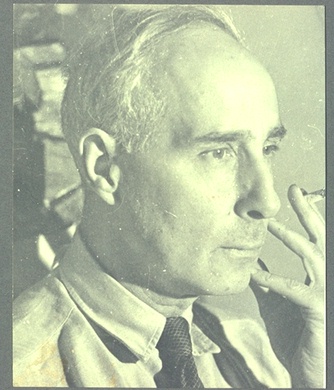Difference between revisions of "Francis Bruguière"
Sorindanut (talk | contribs) |
m (Text replacement - "[[Category:" to "[[Series:") |
||
| (9 intermediate revisions by 2 users not shown) | |||
| Line 1: | Line 1: | ||
{{Infobox artist | {{Infobox artist | ||
|image = Francis_Bruguiere.jpg | |image = Francis_Bruguiere.jpg | ||
| − | |imagesize = | + | |imagesize = 338px |
|caption = Francis Bruguière | |caption = Francis Bruguière | ||
|birth_date = {{birth date|1879|10|15|mf=y}} | |birth_date = {{birth date|1879|10|15|mf=y}} | ||
| Line 8: | Line 8: | ||
|death_place = London, UK | |death_place = London, UK | ||
}} | }} | ||
| − | '''Francis Joseph Bruguière''' (1879-1945) was an American-born photographer. He also worked as a director, producer, painter, and sculptor. | + | '''Francis Joseph Bruguière''' (1879-1945) was an American-born photographer. He also worked as a director, producer, painter, and sculptor. The pictures of Bruguière were often experimental and revealed a peculiar shade technique. Many photos were taken under the impression abstract, surrealist or cubist creative way. |
| − | + | When the devastating earthquake on 16 April 1906 the city of San Francisco rocked and more than 3000 people tore to death, countless buildings were turned into ruins. This rubble inspired a lot of photographers including Bruguière, who was a native. Many of these photos are used worldwide for documentaries, books and newspaper articles about the earthquake and have significance for the history of the earthquake and its documentation. | |
| − | + | ||
| − | + | ==Literature== | |
| − | + | * James Enyart, ''Bruguière: His Photographs and his Life'', New York: Alfred A. Knopf, 1977 | |
| − | |||
==Links== | ==Links== | ||
| Line 20: | Line 19: | ||
* [http://de.wikipedia.org/wiki/Francis_Brugui%C3%A8re Bruguière at German Wikipedia] | * [http://de.wikipedia.org/wiki/Francis_Brugui%C3%A8re Bruguière at German Wikipedia] | ||
| − | [[ | + | [[Series:Photography|Bruguiere, Francis]] |
Latest revision as of 17:38, 3 December 2022
 Francis Bruguière | |
| Born |
October 15, 1879 San Francisco, US |
|---|---|
| Died |
May 8, 1945 (aged 65) London, UK |
Francis Joseph Bruguière (1879-1945) was an American-born photographer. He also worked as a director, producer, painter, and sculptor. The pictures of Bruguière were often experimental and revealed a peculiar shade technique. Many photos were taken under the impression abstract, surrealist or cubist creative way.
When the devastating earthquake on 16 April 1906 the city of San Francisco rocked and more than 3000 people tore to death, countless buildings were turned into ruins. This rubble inspired a lot of photographers including Bruguière, who was a native. Many of these photos are used worldwide for documentaries, books and newspaper articles about the earthquake and have significance for the history of the earthquake and its documentation.
Literature[edit]
- James Enyart, Bruguière: His Photographs and his Life, New York: Alfred A. Knopf, 1977